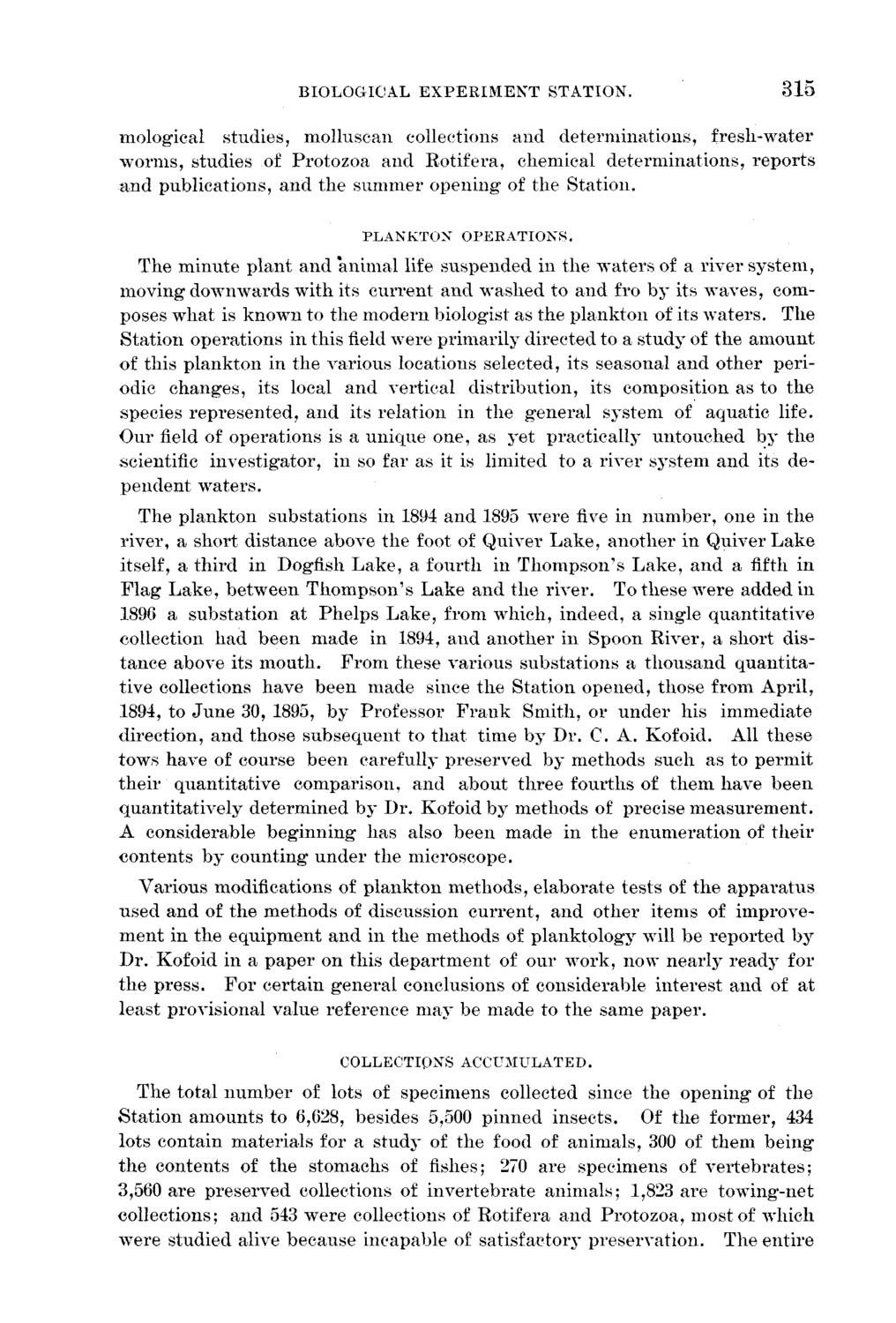| |
| |
Caption: Board of Trustees Minutes - 1896
This is a reduced-resolution page image for fast online browsing.

EXTRACTED TEXT FROM PAGE:
BIOLOGICAL E X P E R I M E N T STATION. 315 Biological studies, molluscan collections and determinations, fresh-water worms, studies of Protozoa and Rotifera, chemical determinations, reports and publications, and the summer opening of the Station. PLANKTON OPERATIONS. The minute plant and "animal life suspended in the waters of a river system, moving downwards with its current and washed to and fro by its waves, composes what is known to the modern biologist as the plankton of its waters. The Station operations in this field were primarily directed to a study of the amount of this plankton in the various locations selected, its seasonal and other periodic changes, its local and vertical distribution, its composition as to the species represented, and its relation in the general system of aquatic life. Our field of operations is a unique one, as yet practically untouched by the scientific investigator, in so far as it is limited to a river system and its dependent waters. The plankton substations in 1894 and 1895 were five in number, one in the river, a short distance above the foot of Quiver Lake, another in Quiver Lake itself, a third in Dogfish Lake, a fourth in Thompson's Lake, and a fifth in Flag Lake, between Thompson's Lake and the river. To these were added in 1896 a substation at Phelps Lake, from which, indeed, a single quantitative collection had been made in 1894, and another in Spoon River, a short distance above its mouth. From these various substations a thousand quantitative collections have been made since the Station opened, those from April, 1894, to June 30, 1895, by Professor Frank Smith, or under his immediate direction, and those subsequent to that time by Dr. C. A. Kofoid. All these tows have of course been carefully preserved by methods such as to permit their quantitative comparison, and about three fourths of them have been quantitatively determined by Dr. Kofoid by methods of precise measurement. A considerable beginning has also been made in the enumeration of their contents by counting under the microscope. Various modifications of plankton methods, elaborate tests of the apparatus used and of the methods of discussion current, and other items of improvement in the equipment and in the methods of planktology will be reported by Dr. Kofoid in a paper on this department of our work, now nearly ready for the press. For certain general conclusions of considerable interest and of at least provisional value reference may be made to the same paper. COLLECTIONS ACCUMULATED. The total number of lots of specimens collected since the opening of the Station amounts to 6,628, besides 5,500 pinned insects. Of the former, 434 lots contain materials for a study of the food of animals, 300 of them being the contents of the stomachs of fishes; 270 are specimens of vertebrates; 3,560 are preserved collections of invertebrate animals; 1,823 are towing-net collections; and 543 were collections of Rotifera and Protozoa, most of which were studied alive because incapable of satisfactory preservation. The entire
| |